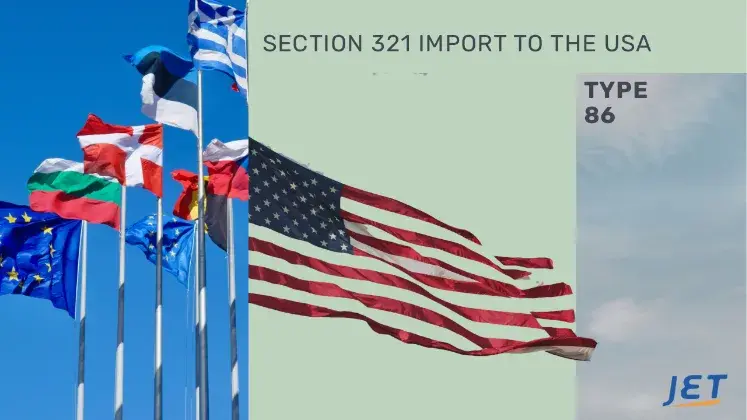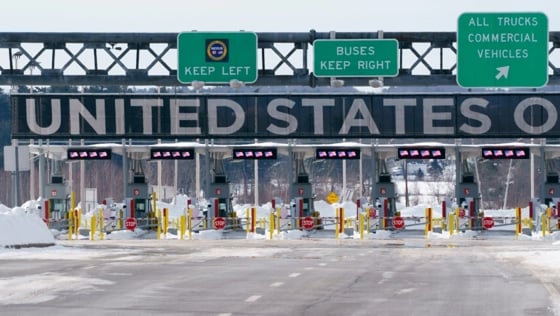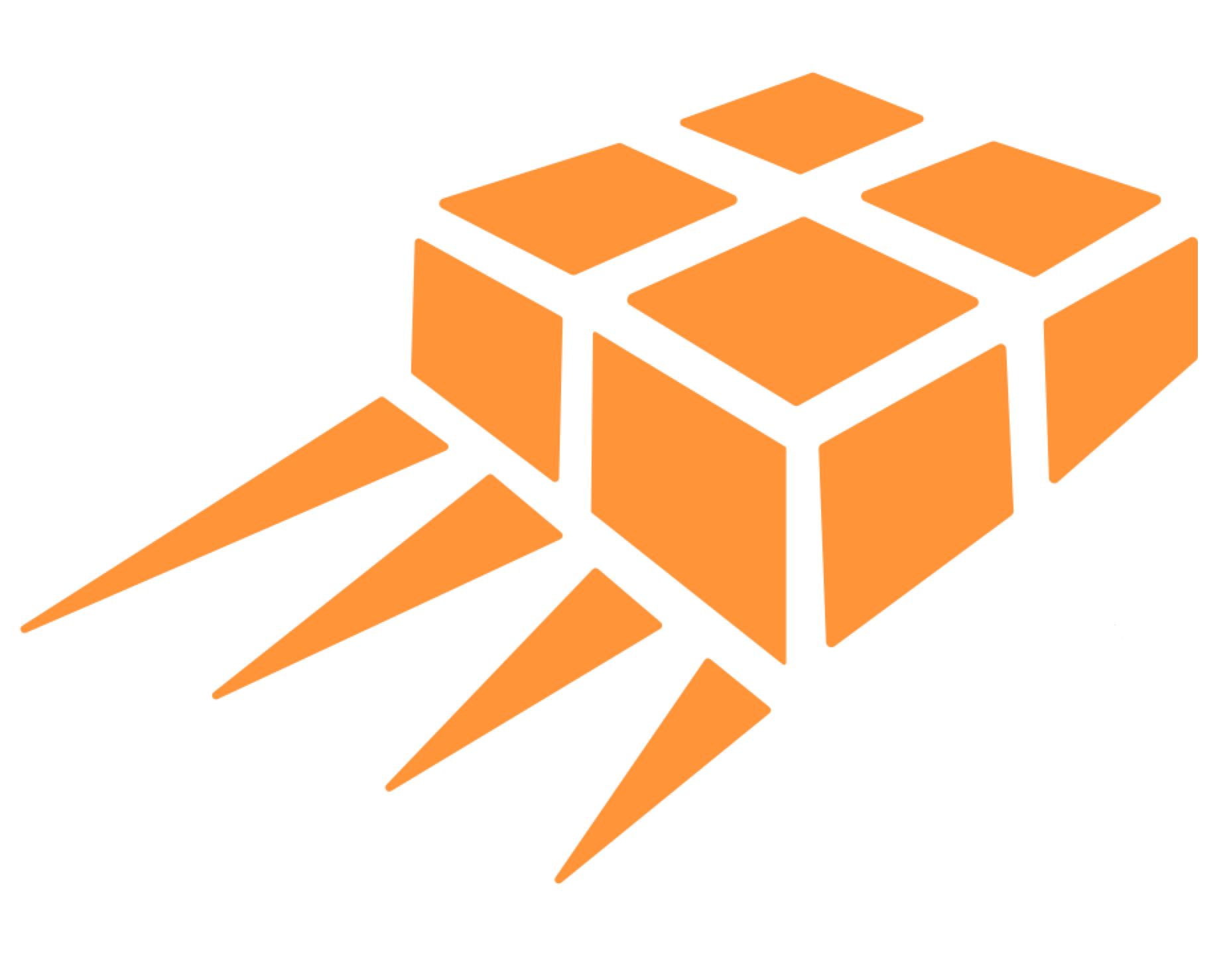
Challenges of Type 86 for US Import
Cross border e-commerce shipments are increasingly transitioning to ocean shipments. Using Section 321 type 86 entries, e-commerce merchants can clear e-commerce orders shipped via individual parcels via ocean freight.
The Type 86 entry filed by a customs broker in the U.S. Although in place for several years it remains a "pilot program." It is deployed in the customs system, ACE. As such, it requires a full 10-digit Harmonized Tariff System (HTS) number.The submission is via a customs broker or importer self-filer.
Sections 321 Data Pilot
Customs is currently running another Type 86 pilot program called Section 321 Data Pilot. Section 321Dataadd additional data requirements for release.The additional data elements include a more detailed description, the URL of the seller, and images of the product.
The key issues to consider when shipping international online orders directly to the US:
- Required documentation for parcels shipped to the US
- How valuation affects clearance
- Types of Section 321 entries methods of import
- Common carrier shipping options for online orders to the US
- Postal access via postal subsidiaries and commercial carriers
- Section 321 entry via an ECCF, an CFS or by way of a type 86 entry
- Securing parcel order logistics with multiple ports of entry and import processe
 Expand your cross border transportation and logistics options.
Expand your cross border transportation and logistics options.
Gain access to our Section 321 and parcel import professionals.Contact our team for an initial consultation.
Required documentation for parcels shipped to the US
US customs processes for online orders have been streamlined. All international parcel shipments to the US must be accompanied by an invoice for customs clearance. Customs clearance is the umbrella term for the various stages of getting your goods across the American border. It can involve US Customs and Border Protection as well as other government agencies such as the Food and Drug Administration or Fish and Wildlife. The key data points required for an invoice for customs include:
- Date of shipment
- Name, address and telephone number of shipper
- Name, address and telephone number of consignee
- Detailed description of the item(s) being sent
- Value of the item(s)
Note: For online orders, the invoice data can be directly transferred consolidated informal entries to US Customs and pre-alert requirements via API interfaces.
Paperwork e-commerce USA Imports and other government agencies
There are over 40 US government departments that have unique requirements necessary for your goods to clear customs.
See links to common Partner Government Agencies (PDF)
Importer of Record
Customs brokers seem now to be the default Importer of Record (IOR) for all Type 86 shipments.The regulations are not clear on who is the responsible party for de minimis shipments. Typically, theImporter of Record (IOR) is the person or entity that owns the goods at the time of import.
The Type 86 pilot does not define the responsible party but CBP now seems to hold the customs broker as the IOR.This is particular as customs brokers are usually not responsible for everything involving the shipment.
US customs suspended and then reinstated several major customs brokers from the Type 86 program. The reasons are not fully understood. But clearly, the customs is sending a message that you need quality control and oversight.
Useful Video: Review ways to access section 321 entries.
How valuation affects import clearance to the US
Customs entries can be broadly defined in 3 categories:
- Under USD 800: Section 321 duty-free
- Over USD 800 but less than USD 2,500: Informal entry
- Over USD 2,500: Formal entry required
Section 321 Port of Entries
- Express and Cargo Major air freight hubs including JFK, DFW, LAX and ORD
- All ports of entry for Type 86
- Border Crossings from Vancouver, Toronto and Montreal
HS Codes are required for Section 321 Type 86 entries
Common carrier options for shipping parcels to the US
The main options for sending parcels to the US from Canada include
- Postal options direct from country of shipping
- FedEx / UPS (including their postal options)
- Shipping via a postal reseller
- Shipping direct to the US for USPS delivery
Sending with local post options to the US
Postal clearance is a separate category for US entry types. While technically subject to the same regulations, many report that postal import processes are much less demanding. Goods that easily clear via postal channels can be held up via commercial clearance.
All postal imports to the US are subject to Advance Electronic Data (AED) requirements. The USPS Global Direct Entry option is a hybrid product that gives international sellers low-cost last-mile postal delivery following commercial clearance (see below).
USPS Global Direct Entry: Benefit from commercial section 321 import clearance and US post office domestic delivery.
Delivery to the US via FedEx Canada and UPS
FedEx and UPS dominate the market for delivery to the US and offer access via their impressive air express networks. They primarily use express consignment clearance processes.
Delivery to the US via FedEx, UPS and DHL US mail options
FedEx and UPS - along with DHL - offer hybrid options of bulk import with final mile delivery via the USPS Parcel Select option. These options ideally integrates air transport within their respective networks, section 321 clearance and last-mile delivery by the USPS.
Postal subsidiaries offering direct postal access
In addition to commercial carriers, major European and Asian postal services have subsidiaries that resell their postal access. These postal subsidiaries take advantage of their membership in the Universal Postal Union (UPU). Even though updated UPU rules has lessened their "postal advantage," these postal groups still offer value added processes for high volume shippers. Asendia, a shared effort by the French and Swiss post, is among the most prominent in this area.
Connecting directly with the USPS from international locations
International retailers can connect directly with the USPS for shipments to the US via their Global Direct Entry. Although having to arrange for their own airlift and clearance to the US, retailers can benefit from a direct USPS relationship and unique service options. Jet Worldwide's team consults with international retailers establish secure import processes.
USPS last-mile delivery
The US Post office remains the lowest-cost last-mile delivery solutions used by Amazon, FedEx, UPS and DHL via their Parcel Select service. There are also independent resellers of this and other USPS final mile delivery options. Once the goods are cleared, it is really just a matter of gaining access at the lowest cost.

Section 321 Entries via Express (ECCF), Cargo (CFS) and type 86 entries
Low-cost clearance using standard cargo clearance through a CFS.
The cost advantage of clearance of high-volume flows through Container Freight Stations (CFS) is simply not having to pay a per shipment fee for clearance. In addition, no HS Codes are required.
The disadvantage to using CFS facilities(versus an ECCF) is essentially speed of clearance. The clearance time can become much greater during peak holiday periods.
Disadvantage of using a CFS:
- Slow uncertain clearance
- No weekend clearance
- Inability to manage consolidated informal entries for parcels valued over USD 800
Jet Worldwide can provide e-commerce cross border parcel speakers and a dedicated webinar for your team.
Express clearance via Express Consignment Carrier Facility/ ECCF
E-commerce parcels sent through ECCF’s are most often cleared prior to arrival and available for injection into domestic delivery streams the same day as arrival. ECCF's are subject to express regulations (Part 128 of the Code of Federal Regulations). Shipments via ECCF's are subject to a charge of $1.27 per shipment (as of 2024).
ECCF's benefit from express clearance processes by US Customs and Border Protection, but are subject of a per house waybill fee (to "reimbursement" customs for the cost of providing express clearance).
Note: Express consignment regulations are defined in Part 128 of the Code of Federal Regulations.
FDA clearance Section 321 (and other Partner Government Agencies)
Certain categories of goods require approval from other Government agencies. This can complicate section 321 entries.
PDF presentation of Partner Government Agencies
Section 321 Type 86: HS Code required
US customs / CBP is advancing processes via the automated broker interface (ABI/AMS/ACE) for Section 321 informal entries via entry type “86” . The ACE Entry Type 86 enables duty-free section 321 access for all methods of transport to all ports
Customs has been working on "one window clearance" processes that incorporates the requirements of other government agencies. In customs parlance, they are referred to as "Partner Government Agencies" or PGA's. Type 86 extends the "one window clearance" processes to include low-value section 321.
Online orders via ocean freight clear via the broker-customs interface (ACE) via type 86 uploads.
Customs Brokers must file a letter of intent with customs and have access to a bonded container freight station (CFS) as the goods are best not left at a carriers facility.
Port of entry and method of transport for e-commerce parcels
The e-commerce express and cargo individual parcel clearance is currently available mostly via air freight hubs and gateway cities. Major express facilities and hubs with advanced Section 321 processes include:
- FedEx, UPS and DHL Express hubs
- Independent ECCF facilities in Los Angeles, Miami, New York and Chicago
- Cargo clearance (CFS) facilities at major airport gateway facilities
- Type 86 entries at all ports of entry (but access is to a CFS is recommended)
- Border crossing from Canada (airfreighted to Canada and trucked to the border) and Mexico

Hybrid clearance solutions for high-volume parcel flows to the US
Major international retailers are seeking to diversify their processes to build in additional capacity for resilience. This includes repositioning capacity via multiple ports, adding visibility by being in more direct control of clearance processes and enabling a dynamic mix of express consignment, cargo / CFS, type 86, postal and regional last mile options.
Jet Worldwide helps companies understand the processes via the transparent sharing of inside information about processes, carriers, and preferred vendors.





